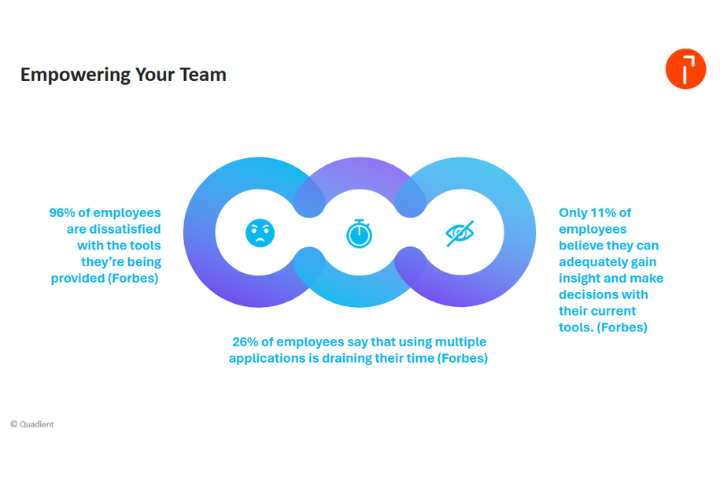
It feels great to make a sale and send an invoice out. Unfortunately, transactions aren’t finalised until money physically changes hands.
When you’re waiting for payments on a number of outstanding invoices, it can get tricky to find the cash you need to cover operating expenses and invest in growing your business.
For this reason, leading accounting teams are focused on doing whatever they can to reduce their organisation’s days sales outstanding (DSO) metrics to measure the average amount of time it takes for the company to actually receive payments after sales are made.
According to a recent study by the Hackett Group, the median DSO score is 43.5 days. Performers in the top 25%, on the other hand, collect payments 25.1 days after invoices are sent out. Phrased another way, today’s strongest companies get access to the cash they’re owed more than 18 days before their competitors.
Late payments are one thing. Missing out on significant chunks of revenue is quite another.
The higher your DSO, the less likely you are to recoup the money you’re owed. According to a recent report, businesses lose 51.9% of the value of their receivables when they aren’t paid within 90 days. So, in addition to being able to use the money you collect faster when your DSO stats are lower, you also won’t have to worry about writing off as many bad debts.
Featured Resource: 2024 AR Collections Best Practices

How exactly do you determine your company’s DSO?
The math is simple: Divide your accounts receivable balance by your total credit sales and multiply that by the period of time you’re measuring.
For example, let’s say you’ve sold £2,750,000 worth of product on credit over a 365-day period and you’ve collected £2,400,000 of that revenue (so £350,000 is outstanding). Here’s how you calculate your DSO:
(£350,000 / £2,750,000) x 365 = 46 days
Generally speaking, a DSO number of 45 or less is considered solid, but every business is different. The tighter your company’s cash situation, the harder it will be to operate with a high DSO.
Keep in mind that DSO is only one piece of the puzzle. You shouldn’t focus all of your energy on bringing the number down as low as you can.
That said, it’s definitely in your best interest to reduce your DSO as much as you can. How exactly can you do that? Here are some ideas:
- Incentivise your customers to pay early. You can accelerate payments by giving your customers early payment discounts. For example, you might offer them the following terms: 2/10 n/30, giving customers a 2% discount if they pay within 10 days. Otherwise, the full amount of the invoice is due within 30 days. To increase the chances they at least pay you by the due date, tack on late payment penalties.
- Streamline your invoicing procedures. The sooner you send out invoices to your customers, the sooner they’ll send you a check. You may be able to reduce DSO by optimising your invoicing process and making sure that your accountants send out accurate bills the moment a service is rendered or a product is sold.
- Be careful about extending credit to just anyone. Not every business is creditworthy. Instead of extending credit to every customer that comes your way to increase sales, perform due diligence to determine whether companies are actually deserving of credit. Depending on the nature of your business, you may want to run credit checks on new customers before offering them net terms. You might also want to consider requiring new customers to settle their accounts immediately for the first few months until they’ve demonstrated their creditworthiness. The better the financial health of your customers, the lower you can expect your DSO numbers to be.
With more cash on hand, your business will be better positioned to respond to opportunities and challenges that pop up when you least expect.
The end result? A more agile organisation—and a healthier bottom line.







